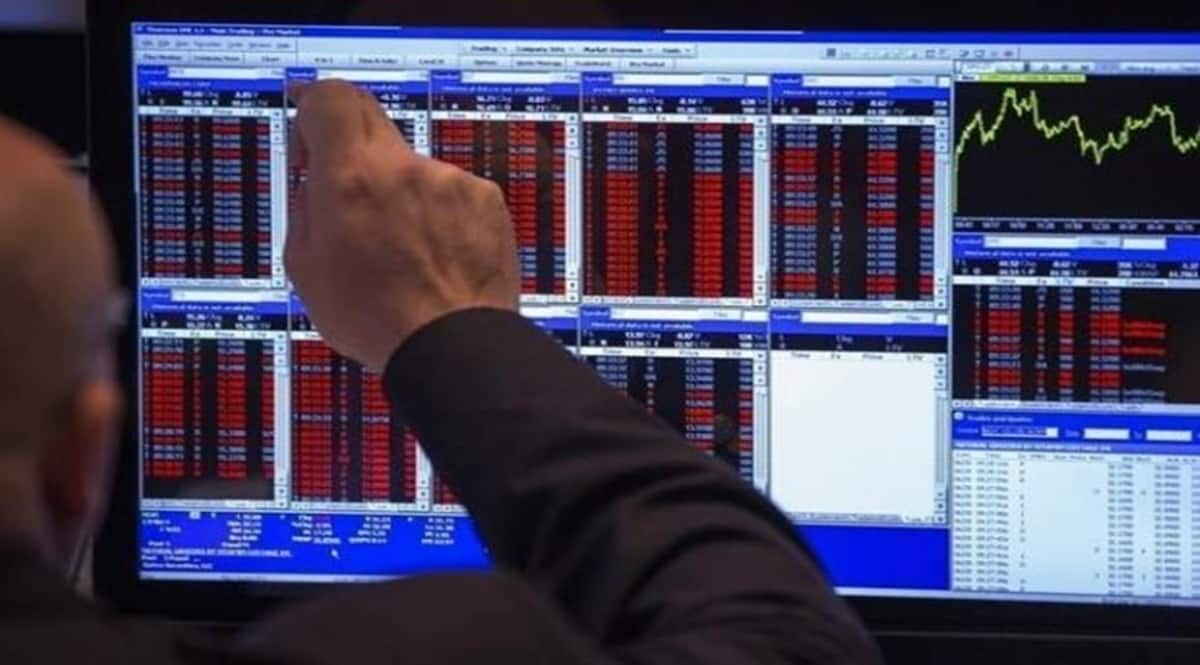Equities erased initial gains on Thursday amid worries that the Federal Reserve would continue to tighten rates aggressively to contain surging inflation, which would further fuel the risk-off trade.
Even the US futures lost about 2% in the opening trade, suggesting the rally on Wall Street post-Fed meeting was short lived. The market expects the Fed to hike another 175 basis points through the rest of the year. The Fed on Wednesday raised its benchmark rate by 75 basis points (bps), its largest hike in almost three decades.

After surging over 1%, both the Sensex and Nifty50 ended 2% lower on Thursday, taking the cumulative fall from October highs to about 17%. The indices are now about 3% away from entering a bear market. Simply put, a bear market describes any stock index or individual stock that drops 20% or more from its recent peaks.“Commentary from the Fed was initially seen as not as hawkish as the market’s worst fears and this resulted in an immediate upmove in the market. However, rising unease over sucking out liquidity from the system with multiple rate hikes in the future and downward revision in GDP forecast for 2022 to 1.7% from 2.8% dented investor sentiment in the later hours of yesterday’s trade,” said UR Bhat, Co-founder, Alphaniti Fintech.
While the Sensex slid 1,045.60 points to settle at 51,495.79, the broader Nifty ended 331.55 points or 2.1% lower to end the day at 15,360.60 points. Both the indices tested their lowest levels since May 2021. The sell-off on Thursday was broad based with the Nifty Midcap and Smallcap losing 2.3% and 3.4%, respectively. Investor wealth to the tune of Rs 5.5 trillion was wiped out on Thursday, taking the cumulative loss since May end to a whopping Rs 19.2 trillion. As of Thursday’s close, the combined market capitalisation of all BSE listed firms stood at Rs 239.21 trillion. “There are now clear indications that the US Fed would be more aggressive in its intensity of rate hikes, going by the guidance offered by Powell on June 15. This is being seen as a definitive move to frontload the reversal of the central bank’s expansionary monetary policy put in place in early 2020 to revitalise the American economy amid the Covid-19 outbreak,” observed Dhiraj Relli, MD & CEO, HDFC Securities.
According to market participants, Fed’s move to reduce the size of its balance sheet will have negative implications for equity markets globally and emerging markets in particular as the rally in equity markets since 2020 has been a function of surplus liquidity and lower interest rate regime. Sucking out liquidity from the system will slowdown the flows into equity market.
“The Fed’s decision to reduce its balance sheet size coupled with several rate hikes in the offing would be a double whammy for emerging markets, even though India would be relatively better positioned vis-a-vis its peers with respect to FPI flows. The rally in equity market since 2020 has been largely a function of an unprecedented liquidity surge and a near-zero interest rate policy. When these get reversed, markets simply cannot remain unaffected,” added Bhat.
The size of the Federal Reserve’s balance sheet has more than doubled since 2020 to $8.92 trillion as of June 08, 2022. The Fed balance sheet now accounts 37.2% of the US GDP compared to 17.6% recorded in August 2019, Bloomberg data show.
Foreign portfolio investors have offloaded a record $26.1 billion worth of shares from the Indian market so far in 2022. Their selling has been most intensive in over a decade — surpassed only by the global financial crisis. However, the impact of foreign outflows has been more than offset by record retail inflows (direct plus mutual funds). “We expect household flows into the market to soften with the reopening of the economy and avenues for consumption. Household asset allocation decisions towards equities have a high dependence on bank deposit rates. As bank rates rise, we expect household flows to slow,” wrote UBS India in a note. On Thursday, FPIs sold Indian equities worth $417.25 million. In contrast, local investors bought shares worth $247.09 million, provisional data on exchanges showed.
According to UBS India, the recent derating has pushed the Nifty twelve-month forward PE down to its five-year average. However, India remains expensive relative to EM and therefore, while we believe the likelihood of FII selling is low, we are not confident of a quick reversal in FII flows, it added. “We are underweight on India relative to EM and our Nifty year-end target is 16,000,” the note further added.
(With inputs from Ruchit Purohit in Mumbai)

Leave a Reply